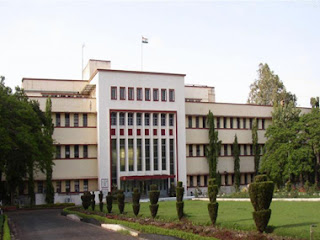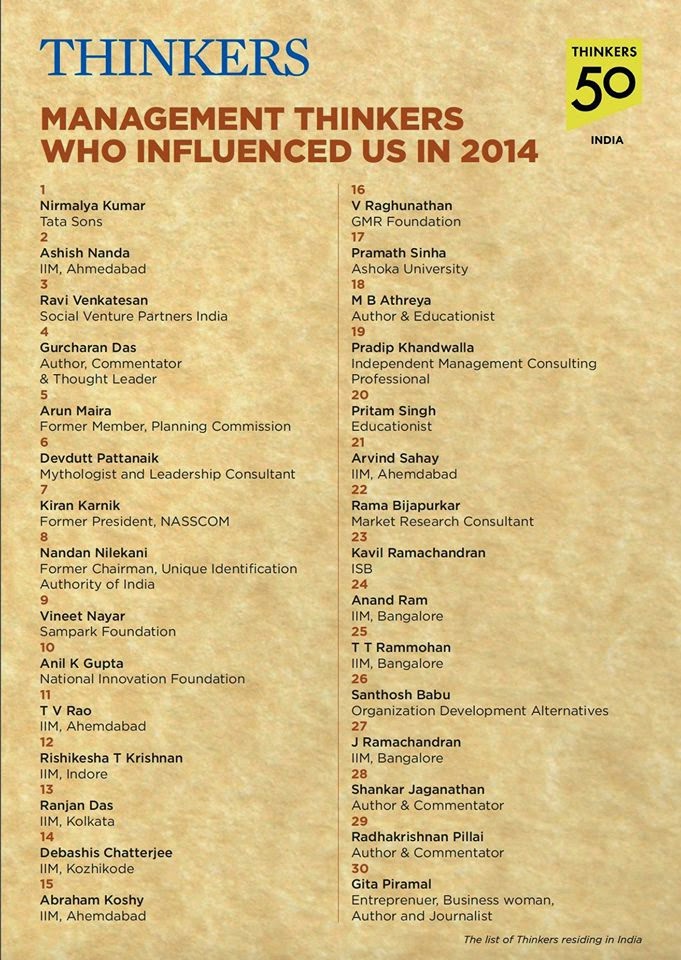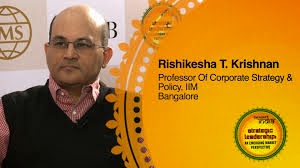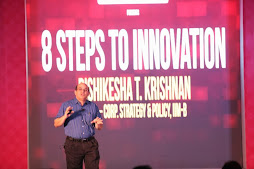Stanford India Biodesign (SIB), the ambitious alliance between the Design School at Stanford, AIIMS and IIT Delhi to train a new generation of medical device innovators, is making steady progress. I attended the 6th Medtech Summit held at Delhi on December 21, and was impressed to see SIB on the verge of moving to Phase 2. I wrote about last year’s summit in an earlier blogpost, and it was good to see the visible progress over the last year.
SIB’s Achievements so far
First, the overall statistics. SIB has so far trained 24 fellows. Fellows visited Stanford for 6 months to learn about the design process, and then returned to India to the SIB design studio at AIIMS to put what they learnt into practice. Fellows come from a variety of backgrounds including medicine, engineering and design. In addition, 28 interns have worked on projects at SIB in India, and imbibed much of their learning from the fellows and the SIB India faculty.
The programme has resulted in the development of 12 devices so far. 20 provisional patents have been granted to cover these devices, and 5 PCT applications have been filed. 5 products are in various stages of trials. 2 companies have been formed, and one product has been licensed for sale and manufacture by Hindustan Latex Limited to the Ministry of Health.
Future Plans
SIB Associate Director Raj Doshi mentioned that when SIB was started in 2007 the approach was to start one centre, show some success, and then expand. SIB is proceeding smoothly along this trajectory. More institutions now plan to replicate the SIB model locally. 2 biodesign centres, at IIT Madras and the Indian Institute of Science, will be funded by the Department of Biotechnology. To facilitate transfer of the Biodesign approach and curriculum, a set of Biodesign Training Modules has been created by the faculty involved in SIB. These modules were released at the Medtech Summit. Two new cross-institutional networks are being formed: the National Biodesign Alliance, and an Indian Biodesign Consortium.
Going forward, there will be a focus on innovation in two areas: Devices & implants; and Invitro diagnostics. A Translational Health Science & Technology Centre is also coming up. The SIB programme itself has been extended for another 5 years. The three prongs going forward will be research for affordable innovation, interconnecting research competencies and resources, and creating a regulatory framework for devices.
Innovations by SIB Fellows
As is the practice at the Medtech Summit, the fellows presented a quick overview of their work.
This year’s team output was showcased by Jonathan. All SIB teams follow the Stanford methodology of Identify + Invent + Implement. On return from Stanford, the team immersed itself in clinical practice to identify unmet needs that would become the focus of their innovation efforts. Clinical immersion spans the three levels of healthcare that exist in India: a community health centre, a district hospital, and the All India Institute of Medical Sciences, India’s premier reference hospital.
This year’s team focused on gastrointestinal disease, the most common cause of hospitalization in India. Their clinical immersion revealed as many as 176 needs which were successively scaled down to 43, 10 and 3 needs respectively based on a variety of criteria including impact, market, technical feasibility, personal preferences, and inputs from the SIB advisors.
All three short-listed needs have high potential impact: (1) a better way to do liver biopsies could help solve a major health problem. 10% of Indians are likely to have suffered from a liver-related disease during their lifetime. Alcohol-caused liver disease results in 40% of liver cirrhosis deaths. The burden of liver failure could exceed Rs. 100 crore every year. There is a potential demand of 4.8 crore liver biopsies every year. (2) Upper Gastrointestinal Variceal bleeding is another serious gastrointestinal health condition. If it can be stopped, 1.8 crore patients could benefit. While it is treatable through endoscopy, a typical patient has to wait upto 8 hours till he can access endoscopic treatment. (3) Abdominal paracentesis affects 3.6 crore patients every year.
Finding it difficult to prioritise between these three significant clinical needs, the team decided to address all three! They showcased Bioscoop, a low-cost device that helps perform a percutaneous liver biopsy; Variseal, a device to help stabilized patients suffering from variceal bleeding till they can be taken for an endoscopy; and Parasafe, a safe and standardized way to do paracentesis. All three devices are low cost and can be used with a high degree of accuracy by relatively less-skilled medical and paramedical staff. For good measure, the team also invented a handheld device for removing foreign bodies from the nose, a boon to pediatric ENT practice.
Innovations by SIB 2011 Fellows
The Medtech Summit was also graduation time for the 2011 fellows who completed their formal association with the programme. Ayesha Chaudhary showcased NeoBreathe, the device the 2011 fellows created to overcome neonatal asphyxia. While asphyxia can be overcome by resuscitation, existing resuscitation methods are too complex and can be used effectively only by the most skilled and dexterous individuals. NeoBreathe de-skills the process by making it much easier: a well-designed resuscitation bay takes care of neck positioning; a foot-powered suction device allows the device to be used even when there is no electricity. The device has a clear indicator that gives feedback on whether the condition is being addressed. The 2011 fellows have co-founded Windmill Health Technologies to commercialise this device. Other devices demonstrated included Uthishtami, a device to help the elderly get up from their chairs, and a device designed to reduce hospital acquired infections – it’s a smart and interactive device worn around the waist that dispenses disinfectant to the wearer. It indicates how long it is since the doctor or nurse last cleaned her hands.
Panel on Training Needs
I was part of a panel consisting of industry folks (Ravi Kaushik of GE, Sandy Sudhir of Invent India), educationists (Suresh Devasahayam from CMC Vellore, Amaresh Chakrabarti from IISc) and Dr. Sujay Shad from Gangaram Hospital. Biten Kathrani of J&J and Anurag Mairal of SIB moderated the discussion. All of us agreed that we need to scale up SIB-like efforts by going well beyond the confines of elite institutions; that innovation needs to be a more cross-functional process; and that with time the emphasis will shift from needs and ideas to commercialization and market impact. Reflecting these last two points, there will be a need for more generalists and entrepreneurs who can integrate all these together.
My contribution to the panel was a plea to extend the scope of the SIB training to include business model innovation. Understanding the motivations of Indian buyers of medical products, and their purchase processes combined with exposure to channel structures and distribution issues would help these smart inventors get the end-to-end business perspective that would help their creatively designed products reach the market.
Takeaways
Thanks to the pioneering efforts of Dr Bhan at the DBT, Dr Balram Bhargava at AIIMS, and all those involved in the SIB programme, the seeds for medical device innovation in India have been sown. As more institutions get involved, this orientation will get diffused with greater benefit to all.
Given regulatory requirements and the fact that human lives are involved, medical devices have to be robust and clinically tested. While devices can use simple concepts, and be focused on ease-of-use and low cost, one thing is clear – this is not a realm for Jugaad thinking. In fact, SIB’s greatest strength is its emphasis on a systematic innovation process. Systematic innovation doesn’t mean high technology nor does it mean high cost – it refers to a process that allows the results of creative thinking to be validated through careful experiments and trials.
The SIB format is well suited to devices of low to moderate complexity. That is what a team can work on and complete within the SIB timeframe. In his remarks, Dr. Deka, Director of AIIMS, called for taking on more complex and sophisticated products, but it’s not clear how that will happen in the present format. Hopefully, fellows will move on to such devices as they progress in their careers.
And, though SIB has done very well so far in creating capable inventors who understand the design process, the next challenge will be commercializing some of the devices. Commercialization has been India’s Achilles heel in the past. Will we be able to overcome it now?
SIB’s Achievements so far
First, the overall statistics. SIB has so far trained 24 fellows. Fellows visited Stanford for 6 months to learn about the design process, and then returned to India to the SIB design studio at AIIMS to put what they learnt into practice. Fellows come from a variety of backgrounds including medicine, engineering and design. In addition, 28 interns have worked on projects at SIB in India, and imbibed much of their learning from the fellows and the SIB India faculty.
The programme has resulted in the development of 12 devices so far. 20 provisional patents have been granted to cover these devices, and 5 PCT applications have been filed. 5 products are in various stages of trials. 2 companies have been formed, and one product has been licensed for sale and manufacture by Hindustan Latex Limited to the Ministry of Health.
Future Plans
SIB Associate Director Raj Doshi mentioned that when SIB was started in 2007 the approach was to start one centre, show some success, and then expand. SIB is proceeding smoothly along this trajectory. More institutions now plan to replicate the SIB model locally. 2 biodesign centres, at IIT Madras and the Indian Institute of Science, will be funded by the Department of Biotechnology. To facilitate transfer of the Biodesign approach and curriculum, a set of Biodesign Training Modules has been created by the faculty involved in SIB. These modules were released at the Medtech Summit. Two new cross-institutional networks are being formed: the National Biodesign Alliance, and an Indian Biodesign Consortium.
Going forward, there will be a focus on innovation in two areas: Devices & implants; and Invitro diagnostics. A Translational Health Science & Technology Centre is also coming up. The SIB programme itself has been extended for another 5 years. The three prongs going forward will be research for affordable innovation, interconnecting research competencies and resources, and creating a regulatory framework for devices.
Innovations by SIB Fellows
As is the practice at the Medtech Summit, the fellows presented a quick overview of their work.
This year’s team output was showcased by Jonathan. All SIB teams follow the Stanford methodology of Identify + Invent + Implement. On return from Stanford, the team immersed itself in clinical practice to identify unmet needs that would become the focus of their innovation efforts. Clinical immersion spans the three levels of healthcare that exist in India: a community health centre, a district hospital, and the All India Institute of Medical Sciences, India’s premier reference hospital.
This year’s team focused on gastrointestinal disease, the most common cause of hospitalization in India. Their clinical immersion revealed as many as 176 needs which were successively scaled down to 43, 10 and 3 needs respectively based on a variety of criteria including impact, market, technical feasibility, personal preferences, and inputs from the SIB advisors.
All three short-listed needs have high potential impact: (1) a better way to do liver biopsies could help solve a major health problem. 10% of Indians are likely to have suffered from a liver-related disease during their lifetime. Alcohol-caused liver disease results in 40% of liver cirrhosis deaths. The burden of liver failure could exceed Rs. 100 crore every year. There is a potential demand of 4.8 crore liver biopsies every year. (2) Upper Gastrointestinal Variceal bleeding is another serious gastrointestinal health condition. If it can be stopped, 1.8 crore patients could benefit. While it is treatable through endoscopy, a typical patient has to wait upto 8 hours till he can access endoscopic treatment. (3) Abdominal paracentesis affects 3.6 crore patients every year.
Finding it difficult to prioritise between these three significant clinical needs, the team decided to address all three! They showcased Bioscoop, a low-cost device that helps perform a percutaneous liver biopsy; Variseal, a device to help stabilized patients suffering from variceal bleeding till they can be taken for an endoscopy; and Parasafe, a safe and standardized way to do paracentesis. All three devices are low cost and can be used with a high degree of accuracy by relatively less-skilled medical and paramedical staff. For good measure, the team also invented a handheld device for removing foreign bodies from the nose, a boon to pediatric ENT practice.
Innovations by SIB 2011 Fellows
The Medtech Summit was also graduation time for the 2011 fellows who completed their formal association with the programme. Ayesha Chaudhary showcased NeoBreathe, the device the 2011 fellows created to overcome neonatal asphyxia. While asphyxia can be overcome by resuscitation, existing resuscitation methods are too complex and can be used effectively only by the most skilled and dexterous individuals. NeoBreathe de-skills the process by making it much easier: a well-designed resuscitation bay takes care of neck positioning; a foot-powered suction device allows the device to be used even when there is no electricity. The device has a clear indicator that gives feedback on whether the condition is being addressed. The 2011 fellows have co-founded Windmill Health Technologies to commercialise this device. Other devices demonstrated included Uthishtami, a device to help the elderly get up from their chairs, and a device designed to reduce hospital acquired infections – it’s a smart and interactive device worn around the waist that dispenses disinfectant to the wearer. It indicates how long it is since the doctor or nurse last cleaned her hands.
Panel on Training Needs
I was part of a panel consisting of industry folks (Ravi Kaushik of GE, Sandy Sudhir of Invent India), educationists (Suresh Devasahayam from CMC Vellore, Amaresh Chakrabarti from IISc) and Dr. Sujay Shad from Gangaram Hospital. Biten Kathrani of J&J and Anurag Mairal of SIB moderated the discussion. All of us agreed that we need to scale up SIB-like efforts by going well beyond the confines of elite institutions; that innovation needs to be a more cross-functional process; and that with time the emphasis will shift from needs and ideas to commercialization and market impact. Reflecting these last two points, there will be a need for more generalists and entrepreneurs who can integrate all these together.
My contribution to the panel was a plea to extend the scope of the SIB training to include business model innovation. Understanding the motivations of Indian buyers of medical products, and their purchase processes combined with exposure to channel structures and distribution issues would help these smart inventors get the end-to-end business perspective that would help their creatively designed products reach the market.
Takeaways
Thanks to the pioneering efforts of Dr Bhan at the DBT, Dr Balram Bhargava at AIIMS, and all those involved in the SIB programme, the seeds for medical device innovation in India have been sown. As more institutions get involved, this orientation will get diffused with greater benefit to all.
Given regulatory requirements and the fact that human lives are involved, medical devices have to be robust and clinically tested. While devices can use simple concepts, and be focused on ease-of-use and low cost, one thing is clear – this is not a realm for Jugaad thinking. In fact, SIB’s greatest strength is its emphasis on a systematic innovation process. Systematic innovation doesn’t mean high technology nor does it mean high cost – it refers to a process that allows the results of creative thinking to be validated through careful experiments and trials.
The SIB format is well suited to devices of low to moderate complexity. That is what a team can work on and complete within the SIB timeframe. In his remarks, Dr. Deka, Director of AIIMS, called for taking on more complex and sophisticated products, but it’s not clear how that will happen in the present format. Hopefully, fellows will move on to such devices as they progress in their careers.
And, though SIB has done very well so far in creating capable inventors who understand the design process, the next challenge will be commercializing some of the devices. Commercialization has been India’s Achilles heel in the past. Will we be able to overcome it now?
















































